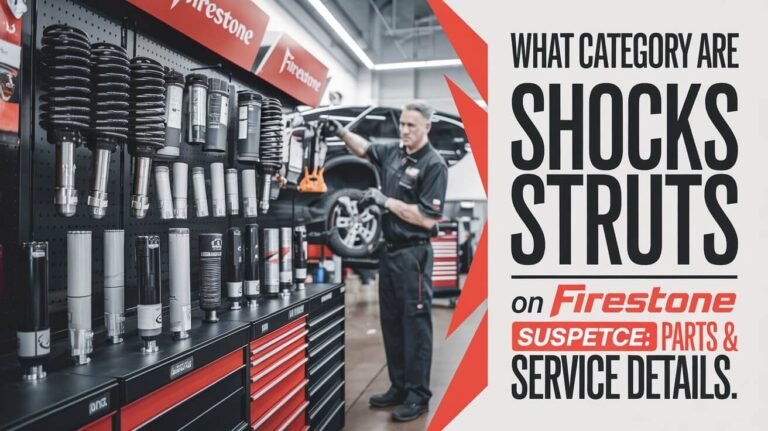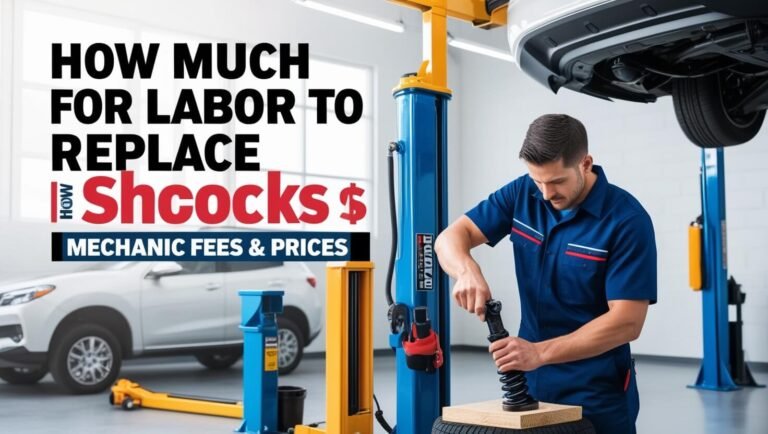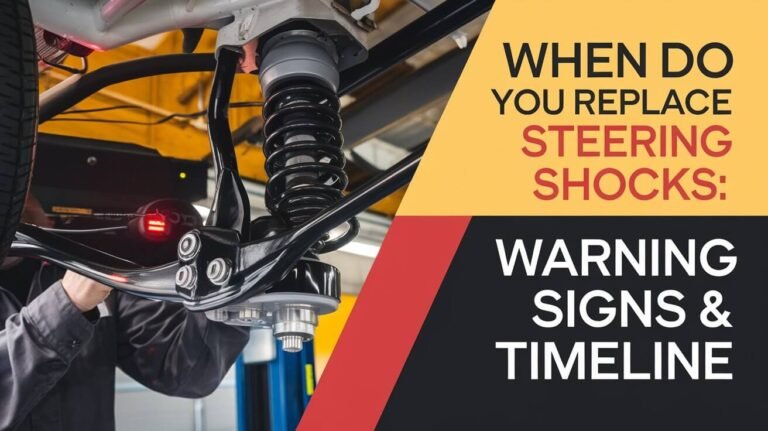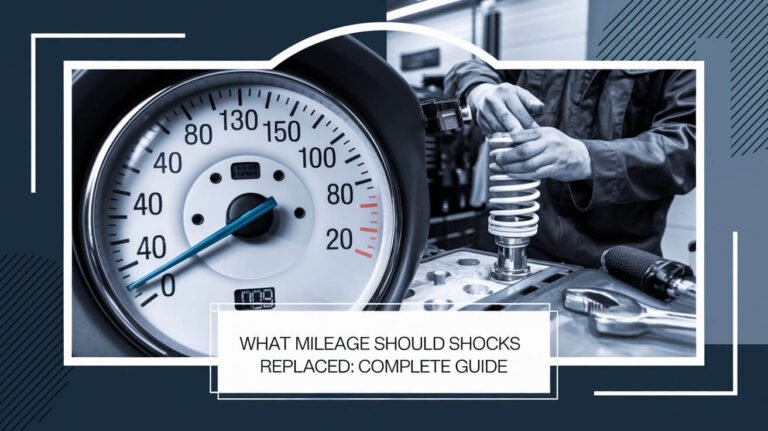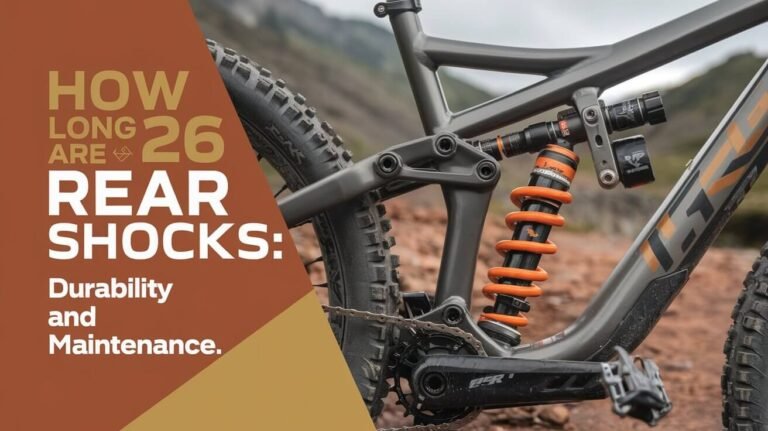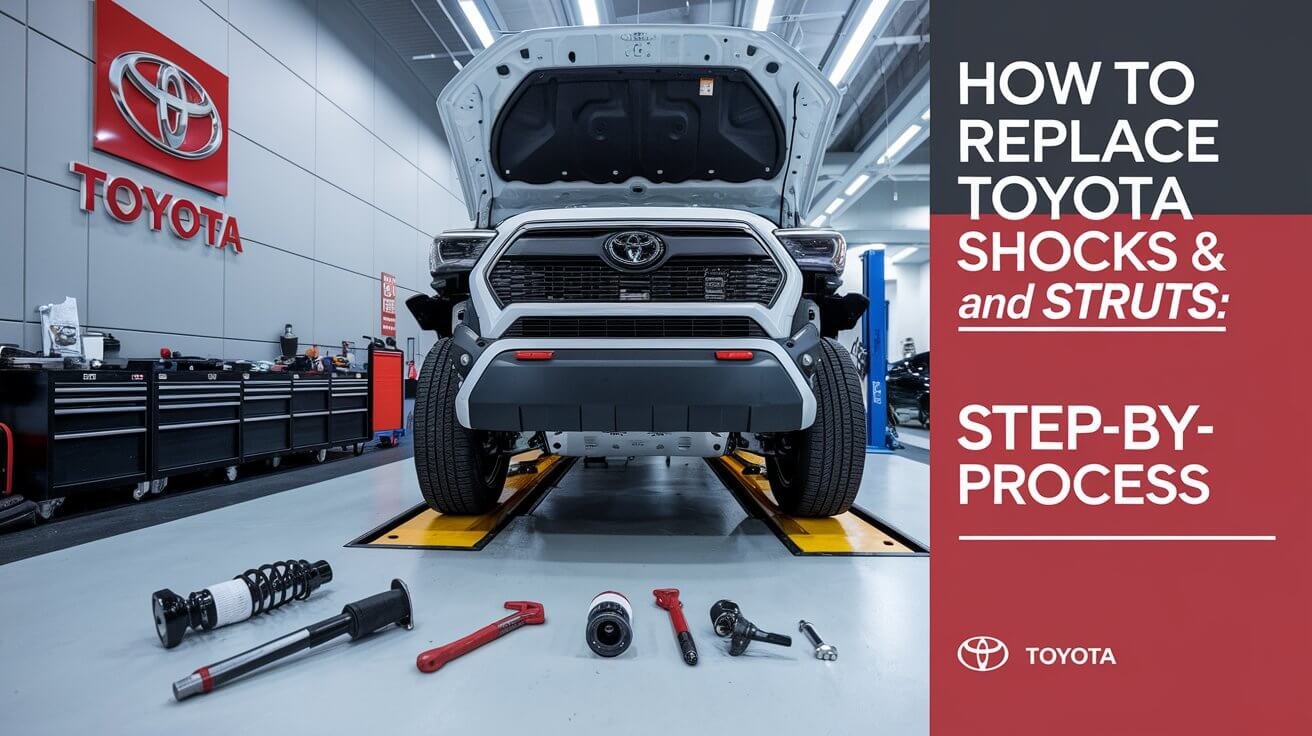
Ever thought about replacing the shocks and struts on your Toyota? It might seem tough, but it’s doable with the right tools and knowledge. This guide will show you how to do it step by step, making sure your Toyota’s suspension is perfect.
It’s a good idea to replace Toyota shocks and struts if your car has over 80,000 miles or shows signs of wear. Doing it yourself can save you money and help you understand your car’s suspension better. Let’s get started and learn how to do it right.
Signs Your Toyota Needs Shock and Strut Replacement
Keeping your Toyota’s suspension system in good shape is key for a smooth ride. Here are the signs that your shocks and struts might need to be replaced:
Visual Indicators of Wear
Look for visible leaks or damage on the shocks and struts. Wet, oily spots around them mean worn-out seals and a need for new parts. Also, if they’re dented, bent, or corroded, it’s time for a change.
Performance Warning Signs
- Excessive bouncing when driving over bumps or potholes
- Nose-diving during braking or squatting when accelerating
- Steering instability or a “tipping” sensation when cornering
These signs show your Toyota’s shocks and struts are not working right. They’re not controlling and stabilizing your car as they should.
Mileage-Based Replacement Guidelines
Start checking your shocks and struts around 50,000 miles. They usually need to be replaced between 80,000 and 100,000 miles. But, this can change based on how you drive and the conditions you’re in.
Not replacing them can cause longer stopping times, uneven tire wear, and more expensive fixes later.
Required Tools and Equipment for Suspension Work
Replacing shocks and struts on your Toyota needs the right tools. You’ll need an impact driver with a 21mm socket and a torque wrench that can handle 155 ft-lbs. These tools make the job easier and ensure it’s done right. Let’s look at what you need for your toyota service manual and automotive parts replacement project.
- Impact driver with 21mm socket: This tool helps remove nuts and bolts from the strut assemblies quickly.
- Torque wrench capable of 155 ft-lbs: It’s important to have accurate torque readings for tightening suspension components right.
- Macpherson strut spring compressor: This tool safely removes and installs coil springs on strut assemblies.
- 1/2″ breaker bar with PVC pipe extension: It gives you the extra leverage needed to loosen tough fasteners.
- Extra jack and block of wood: These are useful for supporting the vehicle during the replacement process.
You might also want to have these items ready:
- Rust penetrant: It helps loosen corroded or seized fasteners.
- Wrenches: For removing and installing various suspension components.
- Pin punch or large screwdriver: It helps with disassembly and reassembly of strut assemblies.
- Thin plywood: It provides a stable surface for the vehicle during the job.
- Large sockets: You’ll need these for certain suspension components, depending on your Toyota’s make and model.
With the right automotive parts replacement tools and equipment, you’ll be ready to replace your Toyota’s shocks and struts confidently.
Safety Precautions Before Starting the Job
Replacing shocks and struts on your Toyota is a big job. Safety comes first. Make sure you have a clean, well-lit area and the right gear to protect yourself.
Workspace Preparation
Choose a big, bright spot to work in. It could be your garage, driveway, or a parking lot. Just make sure it’s big enough to move around the car. Also, the ground should be flat and clear of anything that could trip you up.
Personal Protection Equipment
- Safety glasses: Wear sturdy, impact-resistant glasses to protect your eyes from debris.
- Gloves: Use durable, cut-resistant gloves to keep your hands safe from sharp things.
- Protective clothing: Wear overalls or a coverall to keep your skin clean from grease and oil.
Vehicle Support Requirements
Before starting, make sure the car is supported with jack stands. This keeps the car steady while you work on it. Always follow the car’s manual for how to use the jack safely.
| Tool | Torque Specification |
|---|---|
| Front Strut Bolt | 214 ft-lbs |
| Anti-Roll Bar Link | 55 ft-lbs |
| ABS/Brake Line Bolt | 14 ft-lbs |
| Upper Strut Mount | 63 ft-lbs |
| Upper Piston Nut | 52 ft-lbs |
| Wiper Nuts | 18 ft-lbs |
Taking these safety steps, you’re ready for a successful diy auto repair and vehicle maintenance job. Now, let’s get started with confidence and care.
How To Replace Toyota Shocks And Struts
Replacing the shocks and struts on your Toyota is key for a better ride and safety. It’s a task you can do yourself with the right tools and patience. Let’s explore how to replace Toyota shocks and struts.
To start, remove the wiper blades and plastic tray to get to the strut assembly. Then, disconnect the left and right components, remembering their orientation for reassembly. Next, loosen the lower strut mount bolts, which are 21mm. Use a jack to align the parts, and then deal with the stabilizer links.
When replacing the front struts, consider changing the serpentine belt too. This is a good idea, even if the belt looks fine. The whole process can take about two hours.
It’s important to use the right torque for safety and longevity. Here are the torque values for key parts:
- Upper strut mounts’ 13mm nuts: 59 ft-lbs
- Lower 21mm nuts: 155 ft-lbs
- Upper stabilizer link’s 17mm nut: 55 ft-lbs
- Strut top nut holding the strut to the upper mount plate: 52 ft-lbs
Following these steps and using the correct torque, you can replace your Toyota’s shocks and struts. This will keep your vehicle’s suspension system in great shape.
Front Strut Removal Process
Replacing shocks and struts on your Toyota starts with removing the front strut. First, we remove the wiper arms and plastic tray. This lets us get to the strut assembly.
Accessing the Strut Assembly
We start by taking out the wiper arms and the plastic tray. This makes it easier to see and work on the strut parts. After removing these, we can move on to the next steps.
Disconnecting Components
Next, we disconnect the upper strut mounts and the lower nuts. This lets us remove the strut from the suspension. Remember to use the right torque for these parts, which we’ll discuss later.
Spring Compression Techniques
Using a spring compressor is key in removing the strut. This tool helps us safely release the spring’s tension. We must follow the spring compressor’s instructions carefully and avoid pointing the loaded strut at anyone.
After compressing the spring, we can remove the strut assembly. If you’re reusing the upper mount bearing, clean and grease it first.
| Torque Specification | Value |
|---|---|
| Top Mount Bolts | 37 lb ft |
| Front Bottom Bolts | 214 lb ft |
| Stabilizer Bolt | 55 lb ft |
Removing the front strut assembly will help you access and replace the shocks or struts on your Toyota more easily.
Proper Torque Specifications and Values
When you replace the shocks and struts on your Toyota, it’s key to follow the right torque specs. This ensures a safe and secure setup. Always use a torque wrench to tighten the parts to the correct values. This step is vital to avoid problems later on.
The upper strut mounts need 13mm nuts tightened to 59 ft-lbs. The lower 21mm nuts should be tightened to 155 ft-lbs. For the upper stabilizer link, use a 17mm nut tightened to 55 ft-lbs. The strut top nut should be set to 52 ft-lbs.
Make sure to use a torque wrench that can handle these high torque values. This is crucial for the proper installation of your toyota service manual and automotive parts replacement. If you don’t tighten the parts correctly, you might face early wear, suspension problems, and safety risks.
Sticking to the correct torque values and using the right tools, you can be sure your Toyota’s suspension is installed right. This means a smooth and safe ride for many miles ahead.
Common Challenges During Replacement
Replacing shocks and struts on your Toyota can come with some common challenges. Knowing these can help make the repair process smoother and more successful.
Dealing With Rust and Corrosion
Older Toyotas often face rust and corrosion, mainly in wet or salty areas. This rust can make removing bolts and parts hard. It’s important to check your suspension parts for rust and fix it early to avoid damage.
Alignment Issues
Changing your shocks and struts can mess with your Toyota’s wheel alignment. It’s key to check and adjust the alignment after installation. Using a jack and wood blocks can help keep the wheels in the right spot.
Parts Compatibility Concerns
When looking for toyota suspension repair parts, make sure they fit your Toyota model and year. Aftermarket parts might not work right, so OEM parts are usually the best choice. They ensure your vehicle runs well without vehicle maintenance problems.
| Common Challenge | Potential Impact | Recommended Solution |
|---|---|---|
| Rust and Corrosion | Difficult bolt and component removal | Regularly inspect for corrosion, use rust-penetrating tools |
| Alignment Issues | Uneven tire wear, poor handling | Use a jack and wood blocks to properly position wheels, have alignment checked |
| Parts Compatibility | Potential fitment and performance problems | Use OEM replacement parts, verify compatibility |
Being aware of these common challenges can help you confidently tackle your Toyota suspension replacement. With the right precautions, you can ensure a successful outcome.
Post-Installation Checks and Testing
After replacing the Toyota shocks and struts, it’s key to do a detailed check and test. This ensures the system works right. It’s vital for the car’s performance, safety, and how it rides.
First, we visually inspect all parts to make sure the new shocks and struts are in place right. We look for leaks, damage, or if they’re aligned wrong. It’s also crucial to check that all bolts and connections are tightened right, as we talked about before.
- Inspect the suspension parts for wear or damage.
- Make sure all bolts and connections are tightened right.
- Check that the new shocks and struts fit well and don’t rub against other parts.
Then, we take the car for a spin to see how it handles and rides. We’re looking for better cornering, braking, and comfort than before.
- Drive at low speeds to check the suspension works right.
- Listen for any odd noises, vibrations, or handling problems.
- Make sure the ride is smoother, with less bouncing and swaying when braking or speeding up.
Lastly, we suggest getting a professional alignment after replacing the shocks and struts. This aligns the wheels for better handling, tire life, and fuel use.
| Post-Installation Task | Importance |
|---|---|
| Visual Inspection | Ensures proper installation and identifies any potential issues. |
| Test Drive | Verifies improved handling and ride quality. |
| Professional Alignment | Optimizes wheel alignment for optimal performance and safety. |
Doing these post-installation checks and tests, you can be sure your Toyota’s suspension is back to top shape. This gives you a smooth and responsive drive for diy auto repair and vehicle maintenance.
Final Thoughts
Replacing the shocks and struts on our Toyota is a tough but rewarding DIY job. We need the right tools, safety gear, and careful attention to detail. Doing it ourselves saves money and boosts our vehicle’s performance and safety.
It’s key to follow the manufacturer’s instructions closely and get help if we’re not sure about something. Making sure to use the right torque, handle compressed springs safely, and check everything after installation is vital. This ensures a job well done and keeps us safe.
Regularly replacing our Toyota’s shocks and struts improves handling and braking. It also makes driving smoother and more controlled. This investment in our vehicle’s care keeps us and our loved ones safe on the road.

